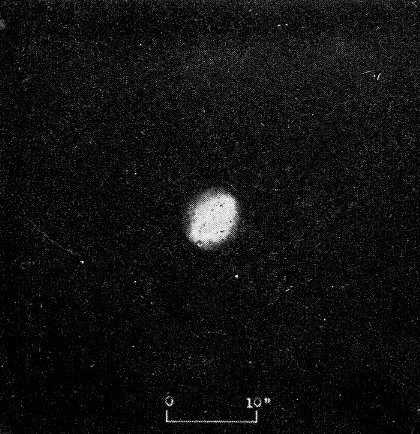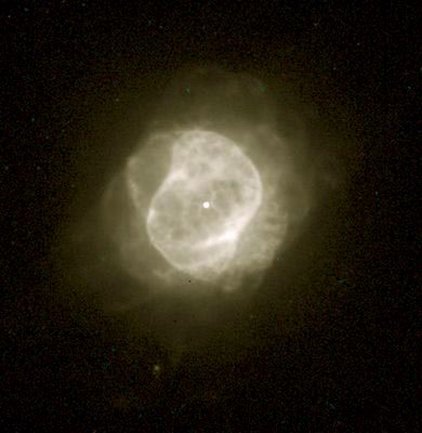NGC 6884
NGC 6884 is a small (7.5 seconds of arc in diameter) planetary nebula in northern Cygnus 5.5 degrees due west of Deneb and just 0.6 degrees southwest of Omicron-1 Cygni (better known as 31 Cyg). Curtis tells us that
"no central star can be distinguished (and indeed all that seems to
be available is a blue magnitude of 16.1). He goes on to say: "A
minute, bright, round disk, of nearly equal brightness throughout,
with a suggestion of an elongated brighter central portion" (the
nebula so bright as to hide the star). Hubble, on the other hand,
reveals an inner nebula seen as a twisted ring set within a larger
complex outer halo. From a reasonably consistent set of distances,
NGC 6884 is around 6000 light years away, giving the bright portion
a diameter of two-tenths of a light year. Set within the
Milky Way,
the nebula suffers something like 1.5 magnitudes of dimming by
intervening interstellar dust.
The temperature of the nearly-undetected central star seems to be
around 87,000 Kelvin, or perhaps less, the star (from the small
size of the nebula) still heating at constant luminosity that must
be greater than 1000 Suns as it heads toward
an unknown, but probably not very high, maximum (the mass
relatively low as told from the nebula's normal, unenriched,
chemical abundances). Expanding at a rate of 23 kilometers per
second, after the central star begins cooling and dimming, the
nebula will dissipate, leaving a common, lower-mass white dwarf behind.
Left: Image by H. D. Curtis from Publications of the Lick
Observatory, Volume 13, Part III, 1918. Right: Hubble image by H.
Bond (STScI) and NASA/ESA.



